DAS Solar's Flexible Mounting System Unlocks Diverse Innovative Application Scenarios
2025-01-20
In the context of the global energy transition, solar is rapidly gaining traction as a promising clean energy source. While solar installed capacity continues to rise, suitable land resources for power plants are becoming increasingly scarce. To ensure the effective implementation of these power plants in various complex scenarios, it has become particularly important to enhance the adaptability of mounting systems to different terrains and applications. In recent years, DAS Solar's flexible mounting system has emerged as the perfect solution in numerous projects due to its excellent performance. The system boasts notable advantages such as high clearance, large spans, reliable safety, low cost, and easy installation. It has been widely used in projects with complex environments such as mountain slopes, wastewater treatment plants, fish ponds, parking sheds, and highway embankments, all of which require strict demands on the span and height of the mounting system. These cases fully demonstrate the strong adaptability and reliability of DAS Solar's flexible mounting systems in complex environments, showcasing their vast potential for future applications.
Hill PV: Cost Optimization among Limited Land Resources
In regions where abundant sunlight resources are combined with untapped mountain and hilly areas, traditional mounting systems face problems such as high construction difficulty and low land utilization when adapting to complex terrains, limiting the development of PV projects.
DAS Solar's flexible mounting system adopts an innovative structural design that employs pre-stressed cables as the primary load-bearing components, with a unique construction technique based on "suspension, tension, hanging, supporting, and compressing". This method involves tensioning the pre-stressed steel strand between two fixed points, creating a stable support system for the modules. In addition to the advantages of large spans, high clearance, and stability, the system can easily handle complex terrain conditions, such as slopes exceeding 40°. The layout can be flexibly adjusted according to project needs, meeting diverse construction demands.
The system is designed to adapt to challenging terrains, such as sloped areas, successfully overcoming geographical limitations. Using east-west tensioned steel cables, the modules are arranged to follow the natural slope of the land. A wind-resistant stabilization system is installed in a north-south direction, creating an optimized spatial arrangement for the entire system. This configuration allows for full deployment, ensuring that the front and rear modules do not block each other, significantly improving the panel density per unit area. As a result, the installed capacity per unit area is estimated to increase by over 25% compared to traditional mounting systems.
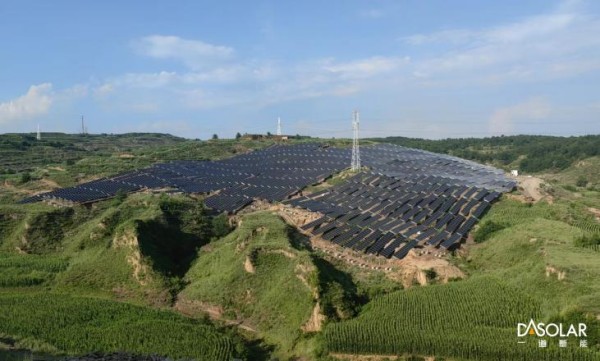
Located at the junction of the Qinghai-Tibet Plateau and the Loess Plateau, the project is faced with a highly sensitive ecological environment, and any construction would likely cause severe damage to the local ecology. During the project's implementation, DAS Solar's flexible mounting system fully utilizes the benefits of large spans, greatly reducing the amount of foundational work required and reducing the number of construction roads in the area. This approach not only minimizes damage to the surface vegetation during construction but also preserves the original land forms to the greatest extent, making an important contribution to local environmental protection. The successful application of the system serves as a powerful testament to the harmonious coexistence of green energy and ecological protection, offering valuable experience as a model for PV projects in similar ecologically sensitive areas.
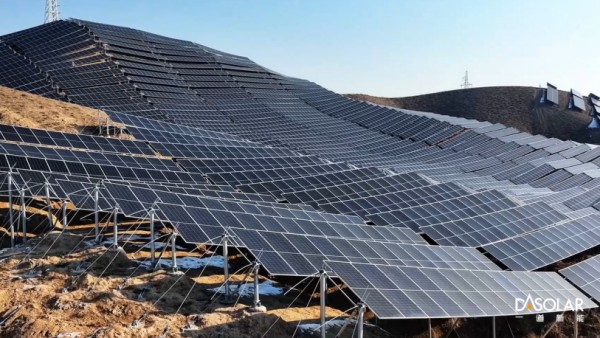
Agri-PV: Tailored Solutions for Dual Productive Use
DAS Solar's flexible mounting system, based on its large span and high clearance, increases the green energy output without changing the original agricultural land use. In the Loess Plateau rocky area, DAS Solar contributes to the construction of an agri-PV project. The installation uses a large-span flexible mounting system with spans of 33 meters and module heights of 5.5 meters, which is arranged between apple trees. By scientifically optimizing the layout and using reflective films, the light utilization rate for the apples exceeds 70%, ensuring fruit quality while steadily increasing yields. The project has become a milestone for successful dual productivity of agri-PV.
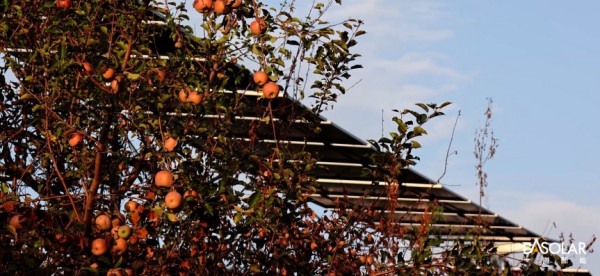
Similarly, DAS Solar's flexible mounting system plays a key role in the collaborative development of solar power generation and medicinal plant cultivation. This innovative integration of renewable energy and smart agriculture enhances the local agricultural industrial structure, significantly improving economic benefits and land use efficiency while establishing a new path for sustainable development.
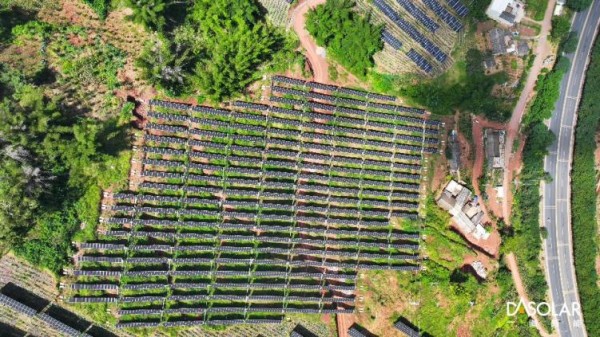
Moreover, the system has also been deployed above mushroom houses, fruit groves, and vegetable gardens, creating a unique "solar corridor". This design improves the microclimate conditions for agricultural production, significantly reducing carbon footprints while boosting agricultural productivity. The project has provided valuable experience in achieving the coordinated development of the economy, society, and environment.
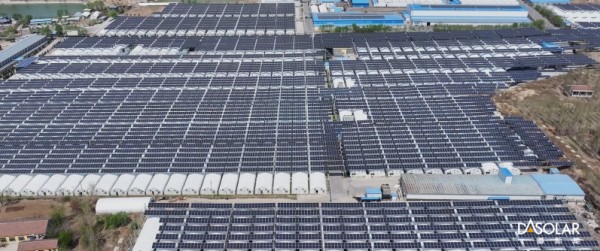
Fishery Complementary PV: Maximizing Space and Strengthening Resilience
DAS Solar's flexible mounting system can achieve spans of 20~40 meters, with a continuous east-west length of over 1,500 meters and a maximum clearance height≥10 meters, effectively reducing the number of piles needed while reserving ample space beneath the PV array.
One of the remarkable examples is this milestone fishery complementary PV project, which adopts the company's self-developed large-span flexible mounting system, solving the tension between traditional PV projects and land resource scarcity. The system is elevated above the fish ponds, preserving valuable land resources while maintaining the integrity of the aquaculture environment. This innovative design not only promotes clean energy generation but also reduces water evaporation, making it a winning solution that integrates energy production, aquaculture, and ecological protection.
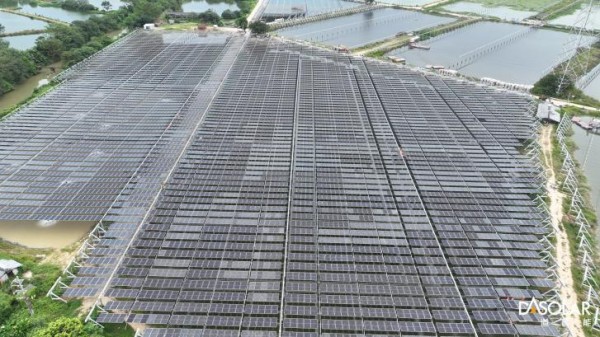
As a pivotal part for solar power plants, the mounting system must withstand various natural environmental conditions. In particular, under strong wind conditions, the modules are prone to twisting, collision, and micro-cracks. DAS Solar's flexible mounting system uses two high-strength pre-stressed steel cables to support the modules in the east-west direction, while a wind-resistance system is applied in the north-south direction, linking the array together into a cohesive structure, forming a spatial cable network that significantly enhances wind resistance.
In another fishery complementary PV project, DAS Solar's flexible mounting system endures the impact of the level-17 super typhoon Yagi, with the project site just 50 kilometers from the landing point. After the typhoon, TÜV Rheinland conducted a thorough field inspection of the modules installed on the mounting system, and the results were outstanding, showing no significant defects in appearance, EL microcracks, or other assessments. Since its completion, the project has withstood several typhoon tests, including typhoons Talim and Koinu, with its exceptional stability and anti-typhoon performance being highly praised by both the project owner and the general contractor.
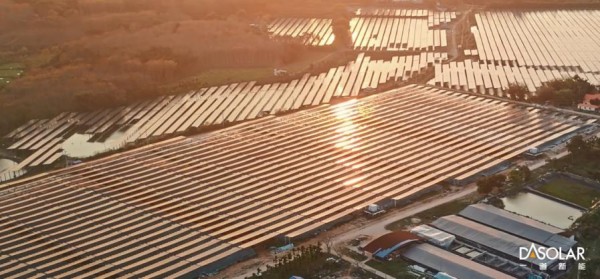
Desert PV: Transforming the Sand Sea into a Green Oasis
In the ecologically fragile desert regions, the Yulin project shines like a green gem amidst the vast sea of sand. Facing harsh natural conditions, DAS Solar's flexible mounting system adeptly navigates the complex terrain of sand dunes and ravines. The system allows for a full array setup, securely mounting the PV panels above the desert landscape. It minimizes damage to the original topography and vegetation, safeguarding the desert's water and soil balance. Above the panels, clean energy is continuously converted into electricity; beneath them, sunlight filters through gaps, reducing surface water evaporation while providing shade to support vegetation growth. What was once a barren, sandy wasteland has now transformed into a green energy powerhouse through technology and innovation.
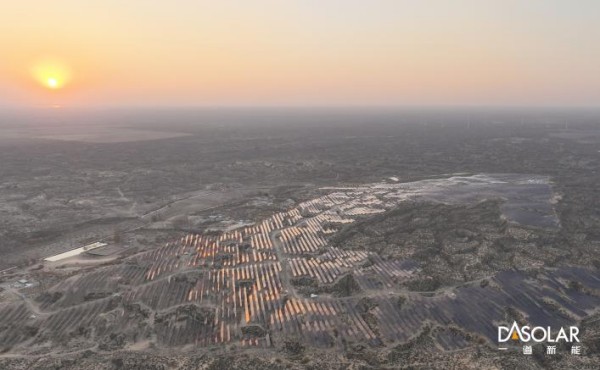
Transportation PV: Leading the Zero-Carbon Mobility Trend
In the realm of green transportation, DAS Solar has pioneered the application of flexible mounting systems at highway service areas. Emphasizing efficiency, aesthetics, and convenience, the system adapts to diverse environments such as service area slopes, parking lots, and charging stations. Offering customized solutions with spans of 15~35 meters and clearance heights of 8~10 meters, the system is designed to meet the needs of different areas. For larger vehicles, flexible steel-frame carports ensure convenient passage and efficient parking; for smaller cars, a compact V-shaped carport combines functionality with visual appeal. Additionally, the system can be flexibly configured in restricted spaces like access ramps, slopes, and charging stations to maximize PV coverage.
For instance, DAS Solar develops the Qingyin Expressway Jinan East Service Area project in partnership with Shandong Expressway. By applying a large-span flexible mounting system tailored to the unique characteristics of the service area, the project has become the country's first "Zero-Carbon Service Area," setting a benchmark for green transportation development.
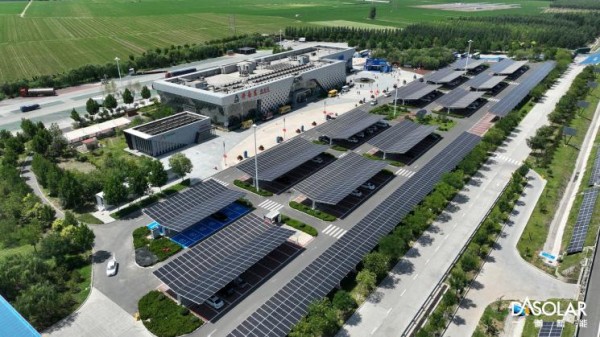
Since its introduction, DAS Solar's flexible mounting system has provided new insights for the industry. During product development, the system successfully passed wind tunnel tests conducted by TÜV NORD and Nanjing University of Aeronautics and Astronautics (testing wind speeds up to 46 m/s), extreme conditions tests in Xinjiang (temperatures of ±40℃ and wind speeds of at least level 12), and harsh assessments for micro-cracks. These tests ensure the safe and stable operation of solar power plants throughout their design lifespan.
To date, DAS Solar's flexible mounting systems have been deployed across challenging environments worldwide. With superior wind resistance and cost efficiency, the systems have facilitated the expansion of diverse "PV+" applications, bringing life and vitality to previously unused land.

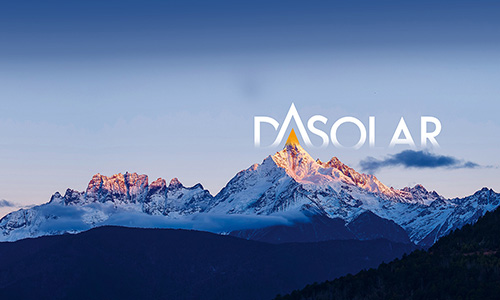




 浙公网安备33080302000236
浙公网安备33080302000236